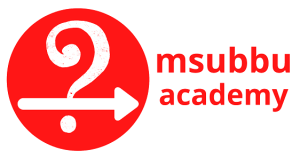CRE-Peer Discussion - Session-2
26-July-2025, 7 to 8 pm
Quick Recap:
The group discussed various reaction topics, including series and parallel reactions, activation energies, and the differences between PFR and CSTR reactors, with detailed explanations of concentration gradients and reaction dynamics. The session concluded with discussions on temperature effects in chemical reactions, variable volume reactions, and gas phase reactions, with Janarth leading the way in solving complex problems and explaining key concepts.
Next Steps:
- Janarth to confirm and clarify the approach for calculating the activation energy for gas-phase reactions.
- Janarth to organize weekly test series and render additional classes on fast track material.
- Janarth to manage the group message for updates and informal feedback from attendees.
SUMMARY:
Chemical Reaction Kinetics and Reactor Design
Janarth discussed multiple reaction topics, focusing on series and parallel reactions, activation energies, and preferred operating conditions for product formation. Arputhaselvi explained the reasoning behind choosing PFR for a reaction with low activation energy and a desired product, which Janarth confirmed was correct. The discussion emphasized the importance of checking activation energies and desired products to determine optimal operating conditions, such as temperature and concentration.
PFR vs CSTR Reactor Comparison
The group discussed the differences between PFR and CSTR reactors, focusing on conversion rates and concentration. Arputhaselvi clarified that while PFR achieves higher concentration of products (\(C_A\)) compared to CSTR, it results in lower overall conversion due to the continuous mixing and residence time. Karthikeyan raised a doubt about the driving force in PFR being higher than CSTR, but Janarth explained that PFR maintains higher initial concentration to achieve higher conversion. The discussion concluded with Janarth explaining how PFR maintains constant reactant concentration while CSTR sees decreasing reactant concentration over time.
Reactor Concentration and Reaction Kinetics
Janarth discussed the concentration gradient and reaction dynamics in a reactor, explaining how the concentration of \(A\) remains constant throughout while \(B\) forms at the higher end. He then addressed a series reaction problem, explaining that since \(k_2\) is very higher, \(B\) is quickly converted to \(C\), making the rate-determining step \(A\) to \(C\) with \(k_1\), which Karthikeyan confirmed as option (d).
Chemistry Reaction Rate Problem Discussion
Janarth led a discussion on solving a chemistry problem involving reaction rates and concentrations. Karthikeyan provided the correct answer, explaining that the desired reaction rate is proportional to the square of \(C_B\), making option (b) the correct choice. Janarth agreed and elaborated on the concept, emphasizing that the concentration of \(C_B\) is crucial for maximizing the reaction rate, while the concentration of \(C_A\) becomes irrelevant when calculating the desired product.
Chemical Reaction Rate Constant Analysis
Janarth explained two chemical reaction problems involving parallel reactions and rate constants. For the first problem, he showed how to derive equations for \(k_1\) and \(k_2\) using conversion terms and selectivity ratios, leading to a method for calculating \(k_1\). For the second problem, he demonstrated how to use mole balances and rate equations to find \(k_1\) and \(k_2\), with the key insight that total moles remain constant in the system.
Exothermic Reactions in Adiabatic Reactors
Janarth led a discussion on temperature effects in chemical reactions, focusing on exothermic reactions in adiabatic reactors. He explained that in such reactions, the product temperature would be higher than the feed temperature due to the heat generated. Arputhaselvi raised a question about the effect of inert gases on product temperature, to which Janarth clarified that without specific mention of inerts in the question, they should assume a pure feed. Janarth also explained how to use energy balance equations to determine temperature changes and discussed a problem involving maximum feed inlet temperatures to prevent the exit temperature from exceeding 390 K.
Gas Phase Reaction Rate Calculations
Janarth explained a problem involving variable volume reactions and gas phase reactions, discussing how to calculate the effective volume and reaction rate constants. He showed how to derive the equation for reaction rate by substituting values and simplifying terms, and emphasized that for gas phase reactions, moles should be taken on the volume side. Janarth concluded the session by reviewing the topics covered, including temperature effects and multiple reactions, and invited participants to ask questions or seek clarification on any doubts.
